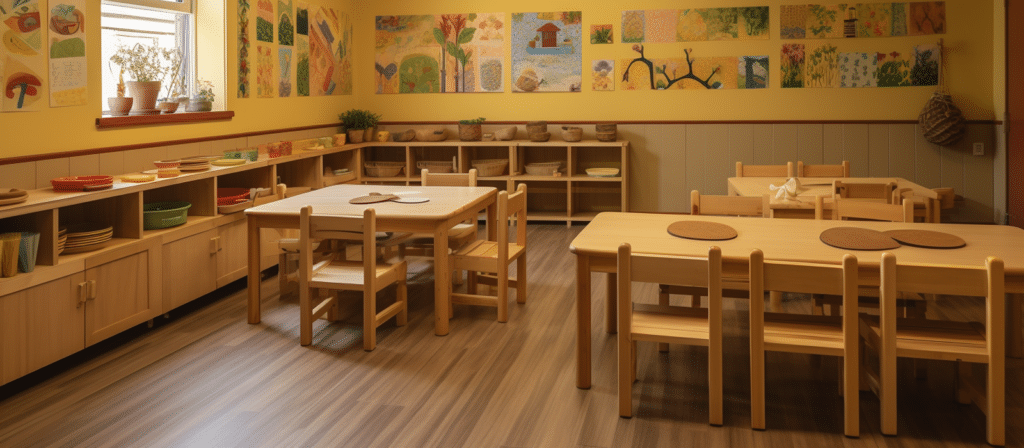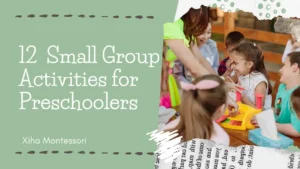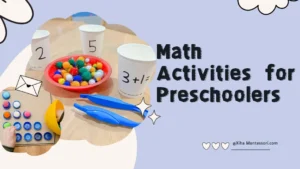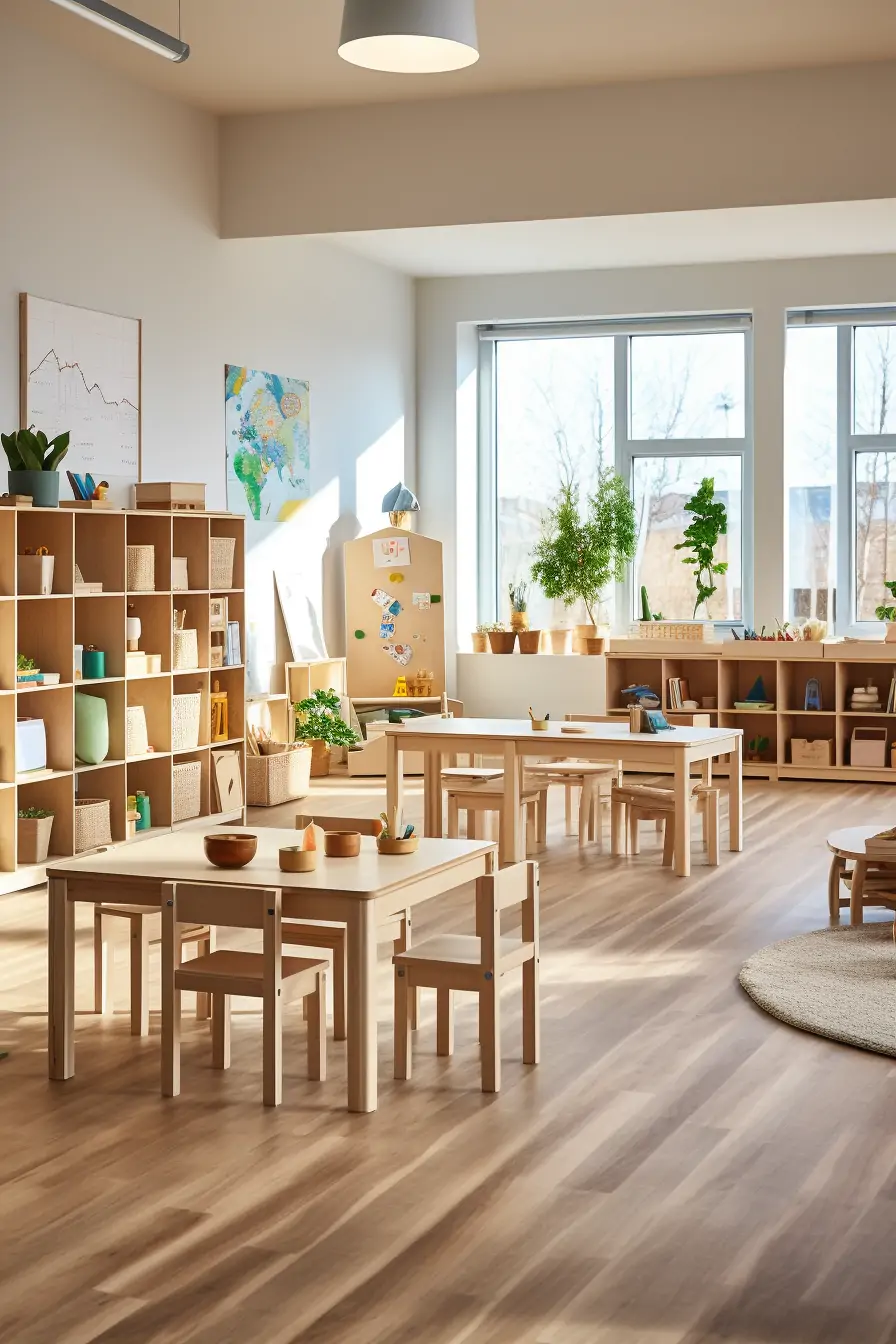In the realm of early childhood education, classrooms reverberate with life – a bustling blend of children’s laughter, animated conversations, and the occasional lively tussle over cherished toys. The ambiance is painted with the sounds of blocks cascading, melodies resonating, toy cars zipping up ramps, and the delightful clatter of pots and pans in the dramatic play corner. Amidst this lively symphony, a paradox emerges: while the ebullient harmony of children’s play enhances their interaction with the surroundings and each other, there exists another kind of clatter, an invisible dissonance nestled within the classroom’s physical arrangement.
The Discord of Disarray
Contrary to the playful rhythm of children’s laughter, a cluttered environment disrupts their harmony. A cluttered setting introduces a mental cacophony that disturbs their thought processes and hampers optimal functioning. This disharmony is a result of overused or underutilized spaces, awkward traffic patterns, an excess of furniture, and haphazardly positioned equipment – a negative chorus to their cognitive melody.
The Consequences of Chaos
The consequences of a cluttered classroom stretch beyond aesthetics, directly influencing children’s development and behavior. A classroom is enveloped in chaos when a child’s easy movement within it becomes a challenge. In situations of high density, where the space is either too confined or too crowded, a troubling crescendo can arise in the form of aggression or destructive tendencies. While spatial constraints might limit the classroom’s dimensions and the number of students, creating an open, uncluttered space remains achievable, setting the stage for a symphony of fluid movement and engagement.
The Sonata of Space Management
To orchestrate the transformation from chaos to harmony, the conductor employs a series of strategies. The first movement involves the intelligent use of available space. A comprehensive understanding of how children utilize the classroom is pivotal. A meticulous usage assessment unveils the underutilized and overused corners, guiding the conductor to decide whether the spatial allocation needs adjustment. An underutilized space, with the right touch of intrigue, can metamorphose into a hub of activity, whereas overcrowded areas can be transformed through prudent space allocation.
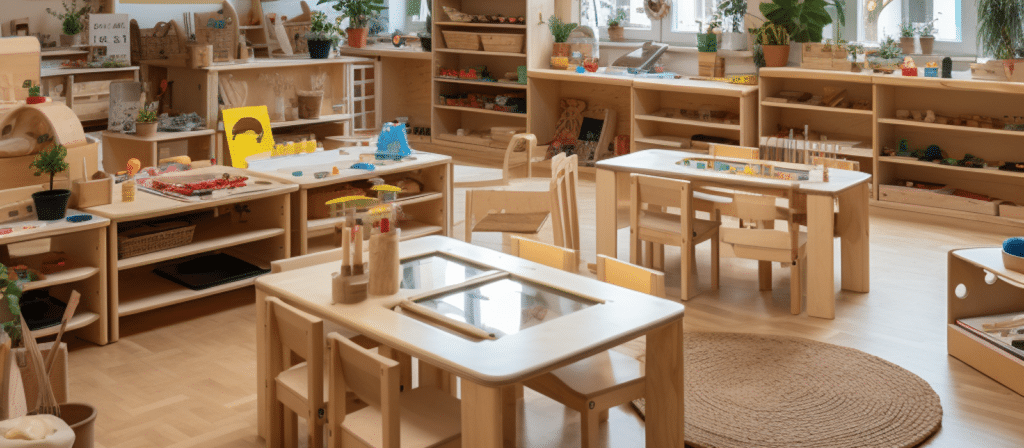
Balancing the Melody
In this symphonic journey, maintaining equilibrium is a critical melody. Imagine the classroom as a vessel, and the children as its occupants. A judicious conductor stands amid this metaphorical vessel, ensuring balance. Assess the children’s distribution within the classroom. If some areas are overflowing while others lay deserted, the vessel tilts, causing disarray. To restore equilibrium, the conductor strategically rearranges spaces, allowing children to interact more harmoniously.
The Crescendo of Invitation
The furniture composition and arrangement compose another stanza of this symphony. Furniture aligned flat against the walls creates an austere ambiance, devoid of warmth. Angled furniture, on the contrary, extends an inviting hand, beckoning children to explore within a cozy embrace. The furniture’s shapes also contribute to the melody: rectangular and square tables exude rigidity, whereas round tables cultivate conviviality. These melodic tables could be placed strategically, encouraging socialization and fostering an environment of positive engagement.
The Transparency Sonata
The composition takes an artistic turn as the conductor introduces transparency to the canvas. Instead of walls built with bookshelves, the conductor opts for a more open, flowing design. Shelving units recede, making way for expansive, unified areas defined by large area rugs. Furniture occupies these spaces at angles, making them both inviting and accessible.
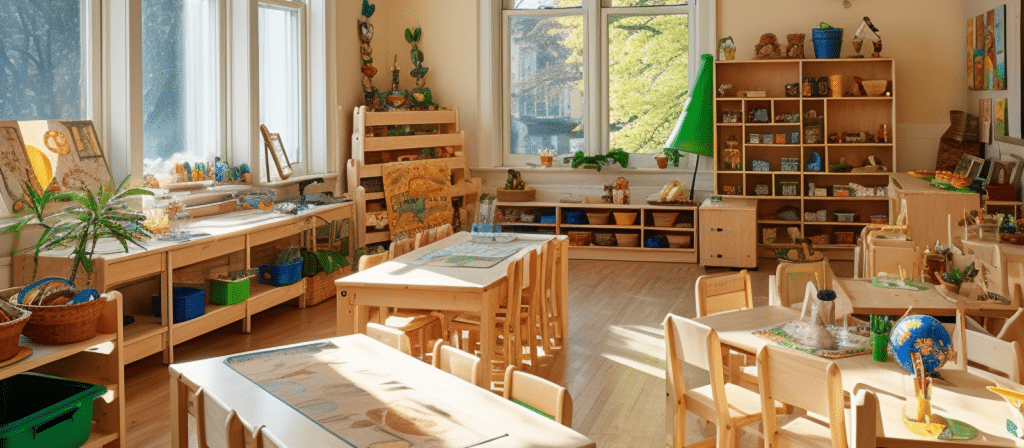
A Chorus of Transformation
The crescendo continues as the conductor uncovers previously unused spaces, crafting hidden gems for children. Quiet reading nooks tucked away in corners, comfortable chairs nestled by windows, and ottomans with dual functions breathe life into these uncharted spaces.
The Finale: A Harmonious Classroom
As this symphony reaches its finale, you, dear conductor, are invited to embrace change. Rearrange the classroom’s notes, challenge the status quo, and let harmony flow. Your students await the grand performance – an arrangement orchestrated for learning, laughter, and growth. RSVP to this symphony of transformation and become the composer of your classroom’s harmonious melody.
Encores of Elegance
For an encore, consider these additional notes to declutter your classroom:
- Pave multiple pathways to and from learning centers.
- Select versatile furniture, capable of adapting to different projects.
- Prioritize foot space over shelf space, eliminating unnecessary furniture.
- Keep the floor clear to ensure easy accessibility.
- Utilize every inch of space creatively.
- Carve out soft havens for moments of solitude.
- Make spaces mobile with added casters.
- Replace traditional bulletin boards with creative displays of children’s work.
The symphony of decluttering awaits your baton. It’s time to compose your classroom’s harmonious opus.

